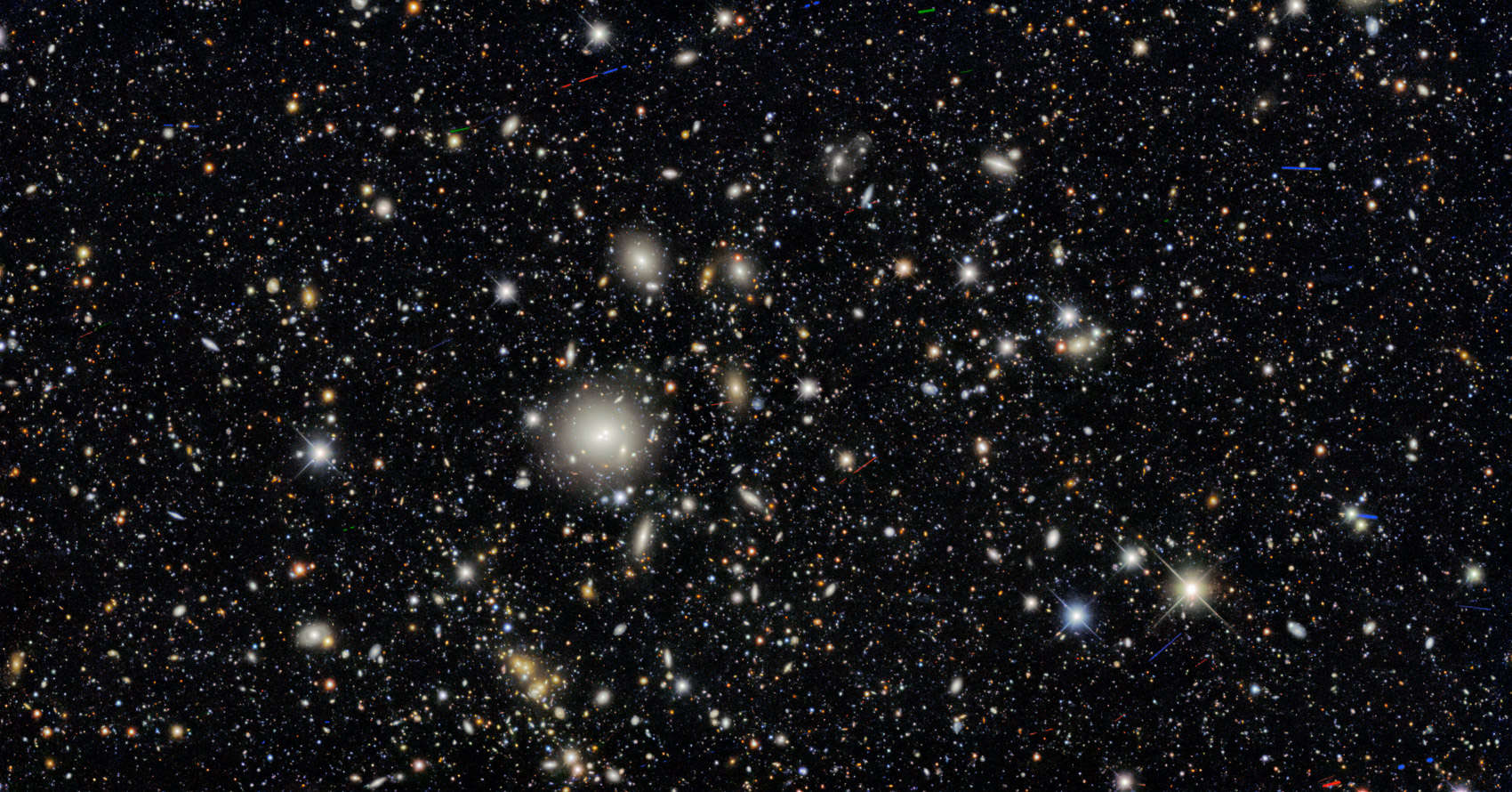Create a free profile to get unlimited access to exclusive videos, sweepstakes, and more!
Deep sky survey shows the Universe is a teeny tiny bit smoother than expected

The enormous Dark Energy Survey (or DES) of the sky is yielding scientific results, and while for the most part they seem to align with what is predicted by cosmological models of the Universe's behavior, there are some interesting numbers that seem to indicate the cosmos not exactly what we expect. It's less clumpy.
The DES uses a four-meter telescope in Chile with a ridiculously huge 570-megapixel camera attached to it to take images of large swaths of the sky. Over the past three years — over 750 nights in total — it's mapped a staggering 5,000 square degrees of the heavens, nearly an eighth of the entire sky, and catalogued nearly 400 million objects, with over half being "extended" (meaning not point-like stars but resolved objects like galaxies and nebulae).
This data has also been meticulously calibrated and analyzed, providing an extraordinary opportunity for astronomers around the world. The overarching purpose is to look at hundreds of millions of galaxies and thousands of supernovae to map out the structure of the Universe itself, the framework upon which everything is hung.
To understand this, you need to rewind the clock back oh, say, 13.8 billion years. The Big Bang was the birth announcement of the cosmos, incredibly dense and hot, and expanding rapidly. This fireball wasn't perfectly smooth, though. By roughly 400,000 years later it had cooled enough to become transparent to light, and now, all these eons later, we can see that light as microwaves coming from every direction in the sky — we call this the cosmic microwave background, or CMB. We can use it to measure the temperature of the Universe at the time, and the observations from, for example ESA's Planck space-based observatory show very slight temperature fluctuations, roughly one part per hundred thousand from one spot to the next.
Hotter spots are where matter is slightly denser, so these temperature fluctuations so that the matter wasn't perfectly smoothly distributed. The Universe wasn't perfectly smooth. And these slightly more massive spots had more gravity, and drew in more material, including dark matter, which clumped up there. This drew in "normal" matter (the stuff we're made of), and this eventually formed into immense clusters of galaxies.
If we measure the distribution of these galaxies and galaxy clusters as we see them today, we can compare them to the observations of the microwave background and models we have of how clumpy the Universe should have been long ago. That's one of the major missions of the Dark Energy Survey.
The models look at things like dark matter (still mysterious matter that has mass and gravity but apparently cannot be directly seen), dark energy (an also mysterious feature that is causing the expansion of the Universe to accelerate), normal matter, and normal energy and see how they interacted to create the Universe we see today.
And this where things get interesting. Overall, the observations so far from DES match what the models predict. Except… the Universe doesn't appear to be quite as clumpy as expected. The distribution of matter across the cosmos is a wee bit smoother than predicted, just by a few percent. It's not much, but it does seem consistent with some earlier observations made. It's not clear what this means — is it a calibration issue, is it a model issue, or could it be real? — but it's something that needs following up. This is a pretty basic cornerstone of cosmology (the study of the structure and evolution of the Universe) and if there's something off-kilter we need to pin it down.
And this isn't all DES will do. Looking at a huge chunk of the sky will yield advances in a lot of different aspects of astronomy. They've also picked a handful of areas of the sky where they'll take "deep fields," spending extra time observing them to look even deeper. These fields have galaxy clusters in them, which are basically astronomers' playgrounds for lots of different things: Galaxy formation, galaxy evolution, galaxy interactions, the behavior of hot gas between galaxies and between clusters, dark matter, gravitational lensing, and probably a half dozen other things I'm forgetting. Just having these wide and deep observations will be extremely helpful to astronomers.
The speed of light is finite, and that means when we see more distant objects we see them as they were when the Universe was younger. Going deep means seeing fainter objects closer to us and more distant objects as well, so we can look to see how things have changed over time, as well as just what things were like when the cosmos was like way back when. All of this is critical to our understanding of astronomy across a range of sub-disciplines.
The DES team just published over two dozen papers about the new results, including how this work was done, how the data were calibrated, and what it means for various studies. It's a truly impressive effort, and this is only after three years! It'll be fun to see what else they can do in the years to come with ever more observations of our night sky.






























